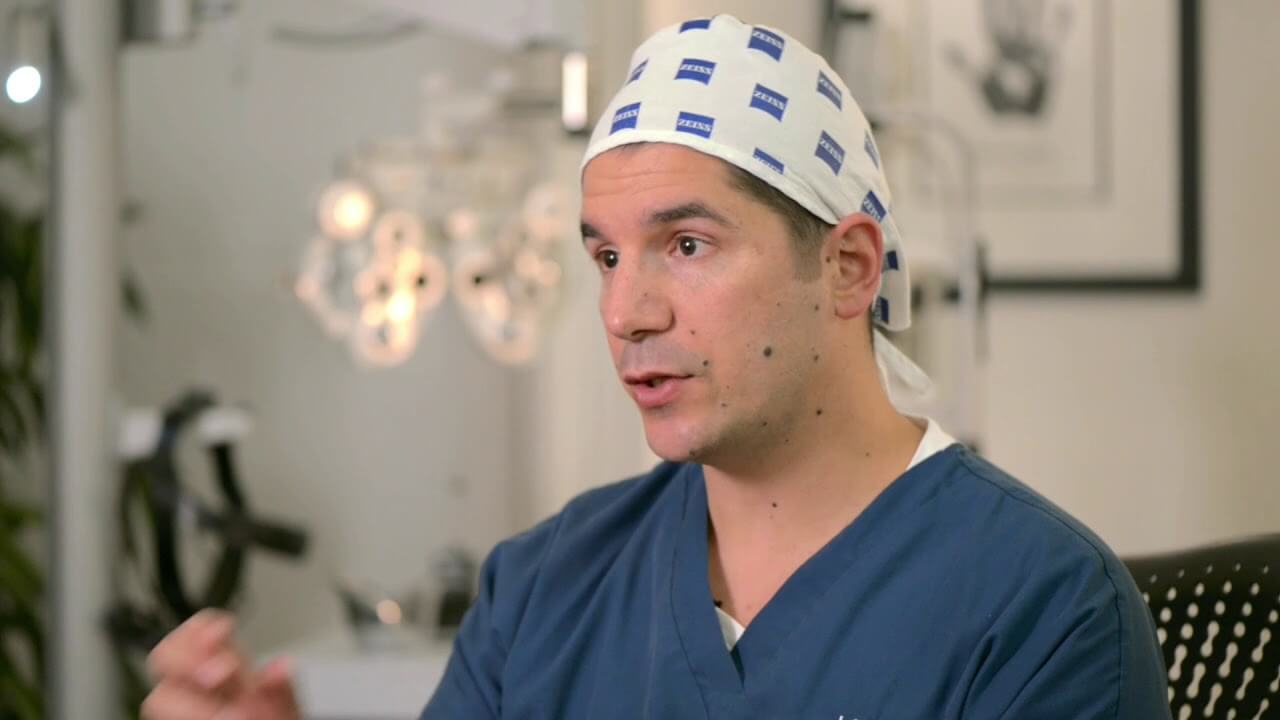The Fundamental Principles in Laser Eye Surgery

Laser Eye Surgery has been around for much longer than most people realise. But while technology and techniques may have advanced a lot since the first surgery was performed in the 1980s, the fundamental principles behind this life-changing procedure have remained largely unchanged. In this article, expert Laser Eye surgeons Glenn Carp and Professor Dan Reinstein walk us through these principles and explain the main Laser Eye Surgery techniques.
What is Laser Eye Surgery?
Laser Eye Surgery is a refractive surgery that uses high-precision lasers to reshape the cornea. There are three main types of Laser Eye Surgery: PRK/LASEK, LASIK, and ReLEx SMILE. Each of these techniques relies on the same principles of removing tissue from the eye to change the way light is reflected onto the retina – a technique that dates back to 1948. However, each uses a slightly different approach to access the corneal tissue to allow the necessary removal of tissue.
All of these treatments are available at London Vision Clinic and can be used to treat a whole range of refractive errors, namely:
The Surface Procedures: PRK/LASEK
The fundamental principles in Laser Eye Surgery now govern three main areas. First, there are the surface procedures, which include PRK and LASEK. These involve removing a portion of the surface layer of the cornea – known as the epithelium. The cells of this part of the eye completely renew every 7-14 days.
Mr Glenn Carp explains, in PRK, “We remove that surface layer, we’re able to reshape the more permanent layer underneath that, which thereafter we can apply a contact lens as a bandage and it will allow the surface layer to regrow under the contact lens.”
In contrast, LASEK simply involves pushing the removed area of the epithelium to one side to allow the surgeon to access the corneal tissue. An excimer laser is then used to reshape the cornea, after which point, the epithelium can be re-draped over the exposed area and held in place with a contact lens until new cells grow to fuse it back in place.
Creating a Corneal Flap: LASIK Eye Surgery
While all three forms of Laser Eye Surgery are still in use today, surface procedures are not as common anymore because they take a little longer to heal compared to the more commonly used techniques which are LASIK, and an even newer version of LASIK, ReLEx SMILE.

As Mr. Glenn Carp explains in the video above, “In a conventional LASIK procedure, the way the laser works is it focuses its energy into the middle of the cornea to create a little bubble layer which is uniform across the surface of the cornea. That bubble layer can be dissected – much like a postage stamp is connected with little perforations – it’s easy to separate. And we can reflect that little bit of tissue, exposing the bed. It’s the bed that’s now reshaped using an excimer laser.”
In LASIK, by returning the corneal flap to its original position, it’s only the edges of the flap that need to heal and thus the recovery time is a fraction of the time when you compare it to LASEK or PRK. Thanks to its less invasive nature, faster healing times, and widespread availability, LASIK has become by far the most commonly performed Laser Eye Surgery technique.
The Keyhole Surgery: ReLEx SMILE
ReLEx SMILE is the latest, minimally-invasive Laser Eye Surgery technique. Also known as SMILE – short for Small Incision Lenticule Extraction – the procedure was first performed in 2008 using the Carl Zeiss VisuMax laser. Three years later, in 2011, the treatment first became available at London Vision Clinic, where it has been performed successfully ever since.
As Mr Glenn Carp explains in the video above, ReLEx SMILE uses only a femtosecond laser – the excimer laser is not needed.
“What the femtosecond laser will do is create two planes – two interfaces within the middle of the cornea – again using the little bubble distribution and we’re able to, through a tiny two-millimetre surface opening, dissect through those bubbles, loosen the lenticule and remove it through the two-millimetre opening.”
“The big advantage the ReLEx SMILE has over conventional LASIK is that we no longer have a flap which gives us a little bit more biomechanical strength to the cornea, and also it means we’re not interrupting many of the nerve fibres on the surface of the eye which potentially means less dry eye in the early post-operative period, compared to regular LASIK.”
Due to the minimally invasive nature of ReLEx SMILE, patients experience faster healing times with many “back to normal” the very next day. It may also increase the suitability of Laser Eye Surgery for patients with thinner corneas and dry eyes.
Mr Carp on the right Laser Eye Surgery technique for you
We receive many questions such as, “When would you choose to use each different type of technique?” Well, once again it comes down to the individual. Certain patients – we know from past experience – will do much better in certain types of treatment and certainly here at the London Vision Clinic, we’re always aiming to get everybody to their best possible outcome.
If you have any further questions regarding the different types of Laser Eye Surgery treatment, don’t hesitate to get in touch with one of our friendly clinic coordinators. Alternatively, Book a Consultation to discover if Laser Eye Surgery is suitable for you.


